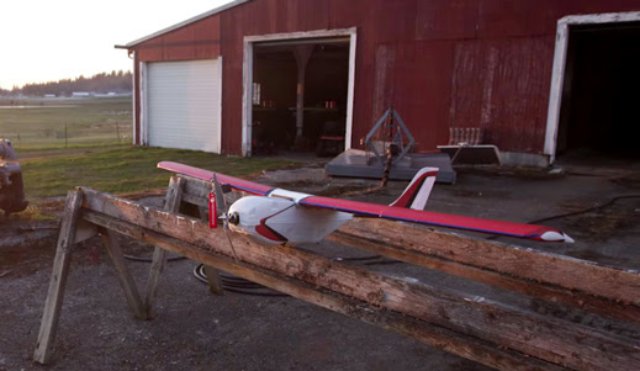 Precision Hawk is helping the FAA work out how unmanned aircraft could safely fly beyond the line of sight of their pilots. A series of flight tests scheduled to start Monday in Butner, North Carolina, will help determine whether and how the Federal Aviation Administration will let that dream come true in U.S. airspace.
Precision Hawk is helping the FAA work out how unmanned aircraft could safely fly beyond the line of sight of their pilots. A series of flight tests scheduled to start Monday in Butner, North Carolina, will help determine whether and how the Federal Aviation Administration will let that dream come true in U.S. airspace.
The flights are part of an FAA program intended to test how drones can operate safely beyond the line of sight of their pilots and deal with problems like encountering conventional, crewed aircraft. The tests are being carried out by drone software and services company Precision Hawk.
Draft safety rules for commercial drones weighing less than 55 pounds released by the FAA this February forbid flights beyond a pilot’s line of sight. That poses a roadblock to industry hopes of using drones for large-scale agricultural surveying or package delivery (see “FAA’s Caution Not the Only Obstacle for Drone Delivery”). Some countries, such as France, allow small drones to operate beyond the line of sight in specific scenarios where the risk of accidents is deemed low, such as railway inspection. But the FAA’s approach is to restrict such flights until technology is available that can more actively guarantee safety.
Precision Hawk was chosen by the FAA because it is developing such a technology. It can have a drone automatically take action such as landing or turning around if it gets too close to a forbidden area such as an airport, or if a conventional aircraft suddenly appears. The company’s system, called LATAS, for low-altitude tracking and avoidance system, can use the Verizon cellular network, satellite links, or standard aircraft location beacons to monitor and communicate with drones.
The trials starting next week will involve flying conventional aircraft close to drones to test how they can safely respond. In the first test an “intruding aircraft” – a role to be played Monday by a powered para-glider – will approach a drone flying within its pilot’s line of sight to test at what distance he or she can detect and respond to it.
Later tests will repeat that scenario but have LATAS handle the situation. Eventually the trials will involve drones operating beyond the line of sight of their pilots.
We want to measure the ability of a person flying the drone looking for airspace hazards visually against letting the drone make some decisions,” says Tyler Collins, who leads work on LATAS at Precision Hawk. “We hope to show the FAA that as we introduce this technology it allows us to create a safer airspace.”
Marty Rogers, business director for the Alaska Center for Unmanned Aircraft Systems Integration at the University of Alaska, Fairbanks, says that showing that such technology can work is crucial for the commercial drone industry in the U.S.
Jobs like inspecting bridges or wind turbines and taking photos are possible while keeping a drone in sight. But for inspecting large farms or long stretches of power lines or pipelines to be efficient it’s necessary to loosen the leash. “There’s really no money in line of sight operations,” he says. “There’s a lot riding on this.”
Precision Hawk is one of four companies working with the FAA in a program called Pathfinder, designed to test technologies that could allow broader use of drones in the U.S. The others are CNN, investigating flying drones in urban areas for news-gathering; BNSF, testing extended beyond-line-of-sight flights for inspecting railways; and federal contractor CACI, testing technology to detect drones that get too close to airports.
Source: MIT
